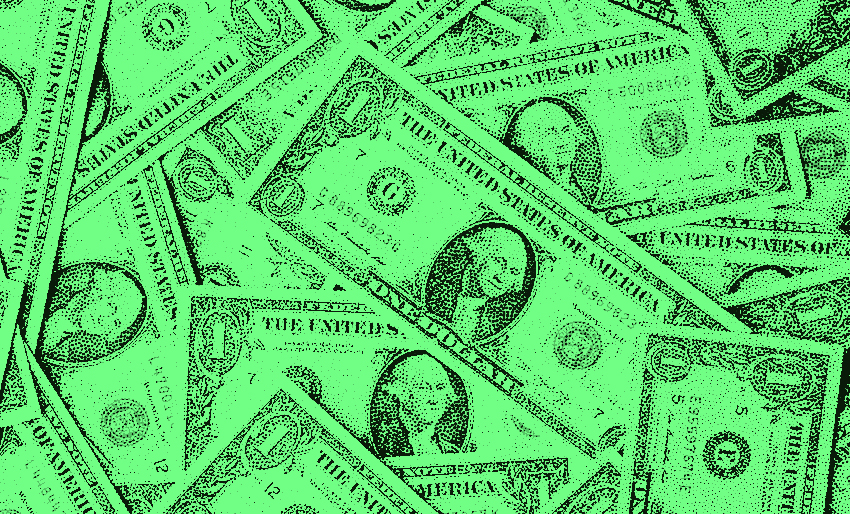Here’s What’s In The New Stimulus Act
Here we are. After months of tough negotiations, Congress finally came to agreement on another round of COVID relief last Monday. And President Trump officially signed it into law on Sunday (after some tense deliberating, and of course some tweeting).
Called the Coronavirus Response and Relief Supplemental Appropriations Act, the $900 billion relief plan is the second largest economic stimulus ever passed after the $2.2 trillion CARES Act last March. Technically, this was linked to a more general government spending plan of $1.4 trillion, for a combined $2.3 trillion. But here we’re just covering the $900 billion pandemic relief portion.
Here’s a breakdown of what’s in it.
Unemployment benefits
The new act allows for an additional $300 per week of unemployment benefits (through March) – the CARES Act had allowed for an additional $600 per week, which ended in July. Also, the act extends unemployment benefits for gig/self-employed workers and people directly impacted by COVID (this was part of the CARES Act and was set to expire).
Direct payments to individuals – $600 per person
Similar to the CARES Act, individuals will again receive stimulus payments – $600 per person plus an additional $600 per child (half of the $1,200 checks sent for the CARES Act). And the same income-based rules apply as before. Payments are reduced if your income exceeds $75,000 and eventually phase out at $99,000 (amounts are doubled for couples).
The payments will be based on your 2019 income. So if you received a check/direct deposit last spring, you should expect another in the coming weeks (but it will be for half as much).
Support for small businesses
More funds have been made available for the Payment Protection Program (PPP) – forgivable loans to small businesses to help them cover payroll. The restrictions are tighter this time around though. Only businesses with fewer than 300 employees can apply and must show a decline of revenue of at least 25% during the first, second, or third quarter of 2020. Applicants can receive a maximum amount of $2 million (vs $10 million last time). Total program amount: $284 billion
Additionally, the act also includes $15 billion of funds dedicated to live venues, independent movie theaters, and museums and $20 billion for businesses in low-income communities.
Housing protection
The CARES Act included a national moratorium on residential evictions – meaning renters could not be evicted from their homes. However, this was set to expire at the end of the year. The new act extends the moratorium until January 31, 2021 and also includes an additional $25 billion in rental assistance.
Funding for education/childcare/and food assistance
It provides $82 billion of funding for schools, universities, and colleges with an additional $10 billion for child care providers. It also raises Supplemental Nutrition Assistance Program (SNAP) benefits for 6 months, for a total of $13 billion.
Vaccines/testing/healthcare funding
The new act provides $69 billion for vaccine distribution, contact tracing, testing, and financial assistance to healthcare providers.
Of that total, $30 billion is for the procurement/distribution of vaccines and treatments and strategic stockpiles. $22 billion is for contact tracing, testing and mitigation. $9 billion is for health care providers. And $4.5 billion is for mental health.
Other
The new act also includes a few other categories, including $13 billion of farming/ranching aid and $10 billion to the US Postal Service, in the form of debt forgiveness for a previous federal loan.
Notably NOT included…
• Funding for state and local governments – Democrats had wanted to include an additional $160 billion in direct aid to state and local governments, but Republicans pushed back.
• Liability protection from COVID lawsuits – Situation reversed. Republicans had wanted to limit COVID-19 liability for businesses, schools, hospitals, and other organizations that might be sued by people who said these institutions were responsible for them contracting COVID. Democrats pushed back on this one.
Neither of these made the final cut, but Congress may revisit them in the future.
So what’s next?
Hard to say at this point, but don’t count on more coming anytime soon. Before signing the bill into law, President Trump was pushing for $2,000 stimulus payments instead of the $600, and the Democrat-led House of Representatives voted in favor of it. However, it’s looking like this won’t get enough support in the Senate to pass (as of right now).
Anything else we can help you with?
► What to do if you’ve been laid off
► Your COVID-19 Financial Playbook
► Learn about investing with our Investing Cheat Sheet



